Hypersonic and Directed-Energy Weapons – A New Arms Race
IRIA Staff - October 31, 2021
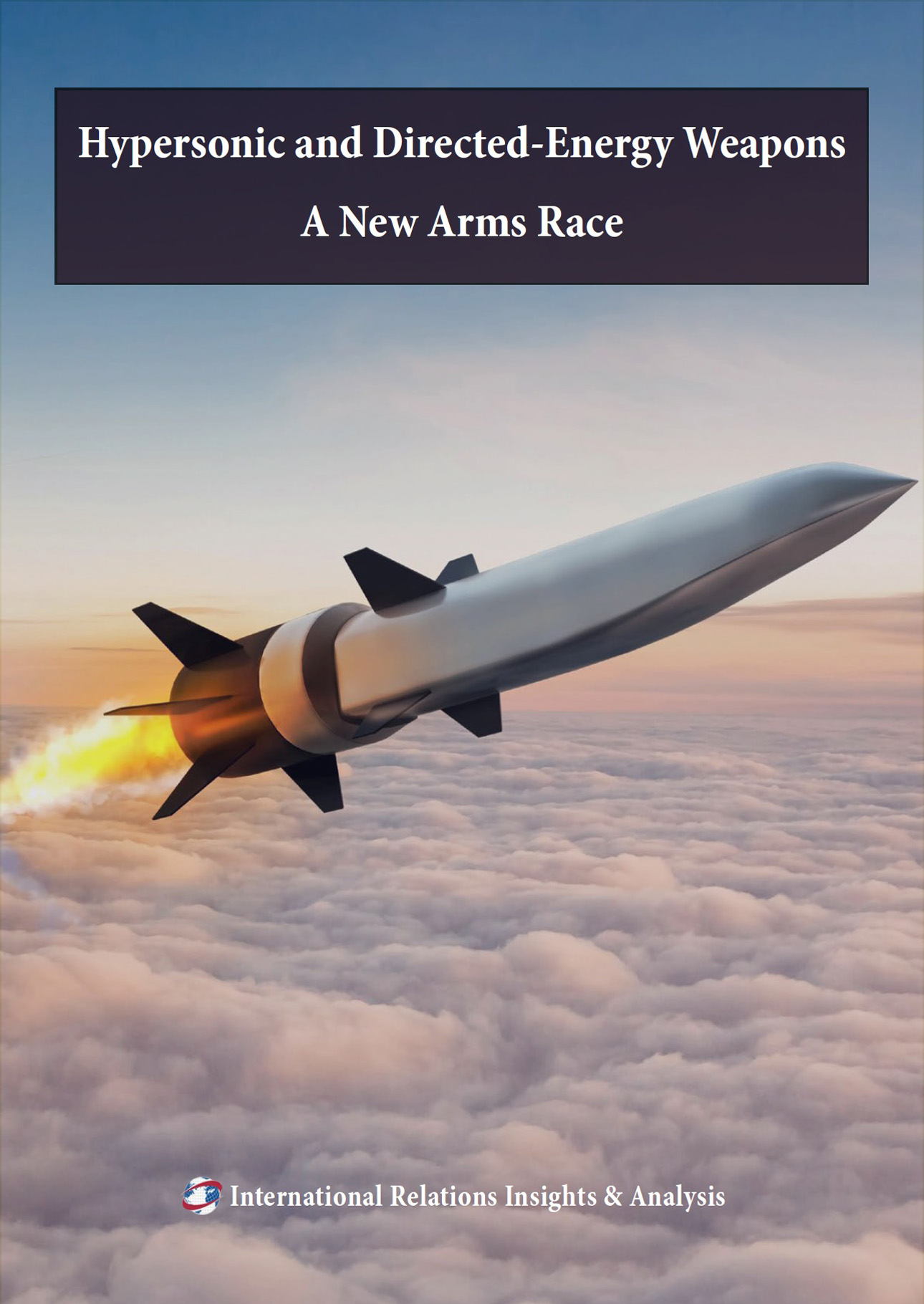
Download PDF Version

Hypersonic and Directed-energy weapons systems have been the center of attention for defense analysts for quite some time now, however, since 2020 major powers have made significant progress in developing hypersonic and directed-energy weapons capabilities.
Directed-energy weapons are designed to damage distanced targets with highly focused energy, such as lasers, microwaves, and particle beams. Laser weapons are the most common type of energy weapons that can be deployed on aircraft, ships, and military vehicles. Laser weapons can hit a target with speed, flexibility, and precision and effectively avoid detection. These weapons are highly effective for Multi-Domain Operations and can deter low-cost threats, such as drones.
Hypersonic weapons are considered the next generation of arms aimed at countering adversaries with increased precision without giving interceptors the time to react and depriving the counter mechanisms. Several countries have been involved in the process of developing their own hypersonic weapons as well as equipping their strategic allies with technologies that can reach speed above Mach 5 (five times the speed of sound).
The U.S. Secretary of Defense for Research and Engineering Michael Griffin underscored the importance of hypersonic weapon technology by calling it “the foremost technical priority” for the U.S. defense.
Hypersonic weapons are mainly categorized into two categories:
1. Hypersonic Glide Vehicles: Launched from a rocket before attaining hypersonic speeds to find and hit its target.
2. Hypersonic Cruise Missile: Powered by high-speed engine and launches itself from surface/air.
Contrary to a conventional ballistic missile, hypersonic missiles do not follow a trajectory but instead follow a route that makes it faster, more reliable and easier to maneuver as well as far more accurate in finding the target as small as six inches. Hypersonic missiles’ parallel glider trajectory also allows them to follow a straight path to avoid entering the ground radar’s detection zone until it is already too close enough to the target.
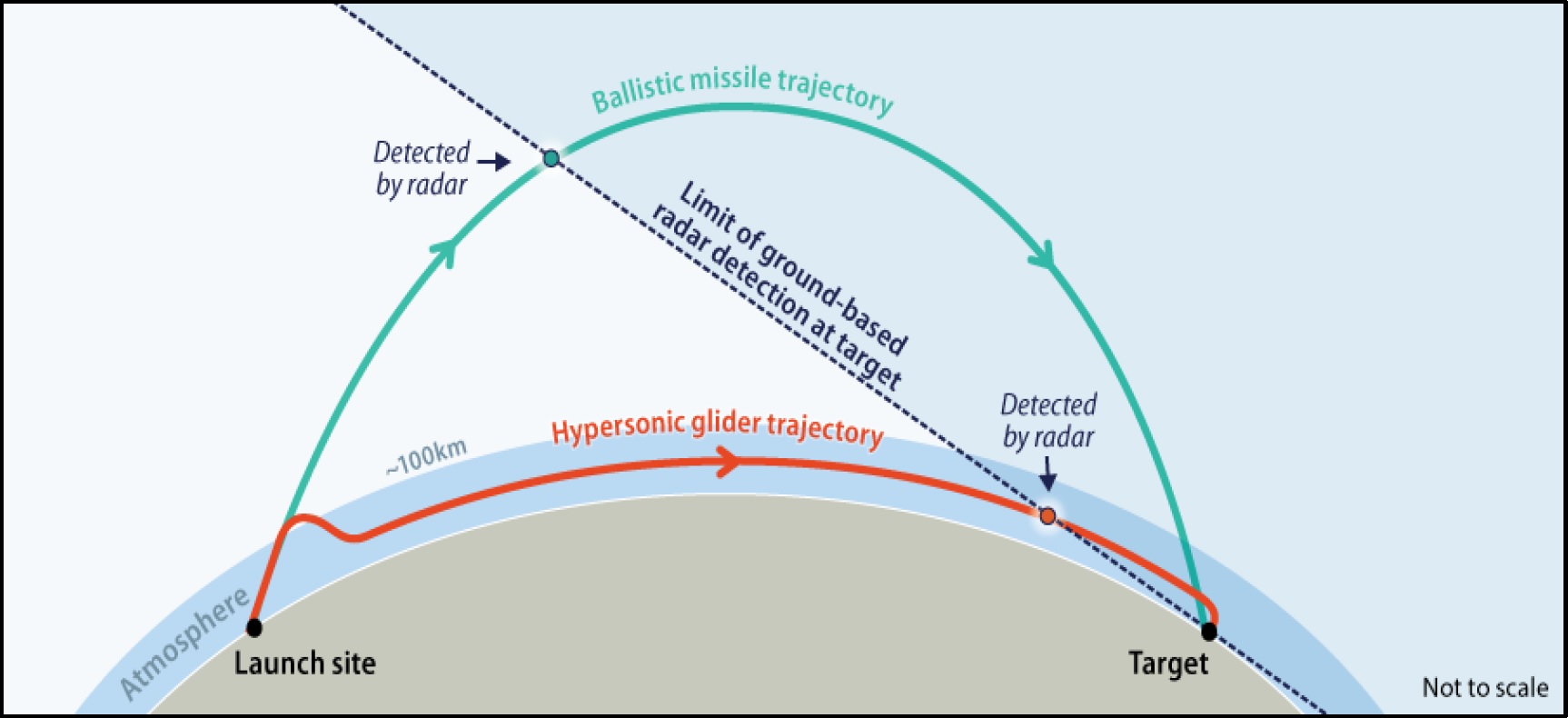 Terrestrial-Based Detection of Ballistic Missiles versus Hypersonic Glide Vehicles. (Image Credit: Hypersonic Weapons: Background and Issues for Congress)
Terrestrial-Based Detection of Ballistic Missiles versus Hypersonic Glide Vehicles. (Image Credit: Hypersonic Weapons: Background and Issues for Congress)
Who’s Got What?
China and Russia lead the hypersonic arms race with operational missiles and hypersonic glide vehicles capable of carrying both conventional and nuclear weapons. The U.S. is rapidly catching up with its adversaries and several hypersonic weapon tests are being carried out by the U.S. Army, Navy, and Air Force. The early procurement of the hypersonic weapon is even more important for the U.S. after North Korea claimed to have tested its own hypersonic missile. With the emerging threats in the region, Japan and South Korea have also paced their hypersonic research programs.
Here is a brief analysis of different countries' Hypersonic and Directed-Energy Weapons capability and future prospects.
China
China is currently the leader in hypersonic weapons development technology and already deployed hypersonic weapons on the field in the form of DongFeng-17 or DF-17, a medium-range missile system that is equipped with a Hypersonic Glide Vehicle (HGV). China’s hypersonic missiles prototypes have been in existence since 2014 under DF-ZF and WU-14 programs but DF-17 is the first publicly proclaimed hypersonic weapon developed entirely by China.
China’s DF-17 missile system is an 11 meters long road-mobile missile that has the capability to carry both conventional as well as nuclear warhead. DF-17 was commissioned to the People’s Liberation Army (PLA) in 2019 when it appeared in October parade for the first time. DF-17 has the capability to reach speeds from Mach 5 to Mach 7, which translates into 1.7 to 3.4 km/s. It can find and hit a target within the range of 1800-2500kms while having a maximum weight capacity of 15,000 kg.
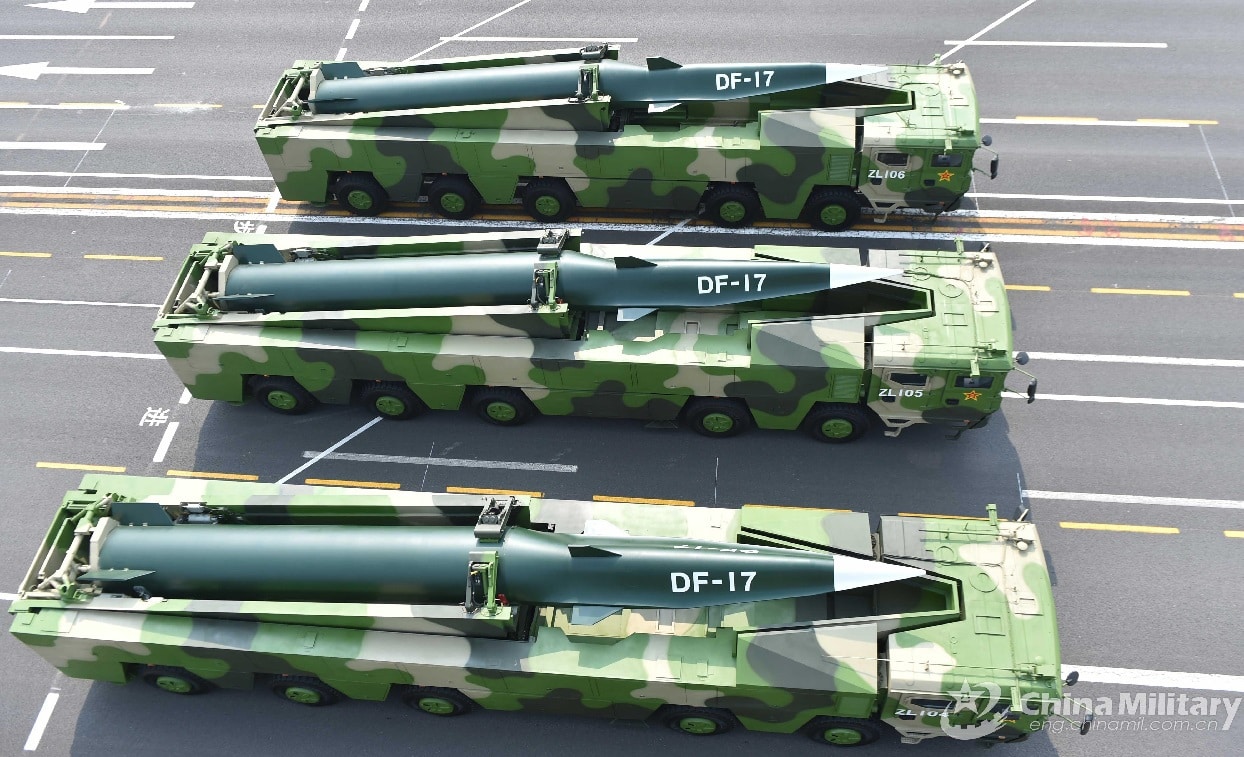 Military vehicles carrying the DF-17 hypersonic ballistic missile during a parade in Beijing celebrating the 70th anniversary of the founding of the People's Republic of China. (Image Credit: Xinhua News Agency)
Military vehicles carrying the DF-17 hypersonic ballistic missile during a parade in Beijing celebrating the 70th anniversary of the founding of the People's Republic of China. (Image Credit: Xinhua News Agency)
Apart from the DF-17 China also has other hypersonic weapons development projects going on that have not been made public. However, according to the sources from the Pentagon in October 2020, China’s H-6N bomber was seen in a video, from Xi’an Airshow, carrying a missile that appears to be an Air-Launched Hypersonic Ballistic Missile. China is yet to confirm the existence of such hypersonic weapon.
China has also successfully tested its Xingkong-2 (Starry Sky-2) missiles, a waverider that derives lift from its own shockwaves, and a nuclear-capable hypersonic vehicle prototype “Lingyun”. According to reports, Chinese hypersonic vehicle Lingyun reached top speeds of Mach 6 and executed a series of in-flight maneuvers. Chinese military seeks to achieve the operational capability of its hypersonic vehicle by 2025.
In addition, China operates at least five hypersonic wind tunnels that are capable of reaching speeds up to Mach 15. According to reports, China has also completed a new wind tunnel with the capability to reach the speeds of Mach 25. China's new JF-22 hypersonic wind tunnel, which is expected to be completed in 2022, will be able to simulate a speed of Mach 30, making China the world leader in hypersonic technology. In October 2021, China tested its new space capability with hypersonic missile. During the test, the missile circled the earth in a low-earth orbit before hitting its target. Although the missile missed its target by 24 miles, the U.S. officials expressed concerns over China’s hypersonic capabilities, calling it “far more advanced than the U.S.”. Despite Chinese government’s claim that the “launch was a routine test” and involved space vehicle, “not a missile”, China displayed significant progress and surprising capabilities in hypersonic technology.
Russia
Russia’s hypersonic glide vehicle missile system Avangard was commissioned in December 2019 after being revealed in 2018. The Avangard missile system had been in the testing process since 2015 and in form of different prototypes named Objekt 4202, Yu-71, and Yu-74. The Russian hypersonic missile technology and expertise are considered to be superior to any other technologies in existence so far because the Russian hypersonic weapons development program dates back to 2002.
Immediately after withdrawal from the Anti-Ballistic Missile Treaty (ABM Treaty), Russian President Vladimir Putin gave orders to start the development of hypersonic weaponry stating, “We have to create these weapons in response to the U.S. deployment of a strategic missile defense system, which in the future would be capable of virtually neutralizing, zeroing out all our nuclear potential.”
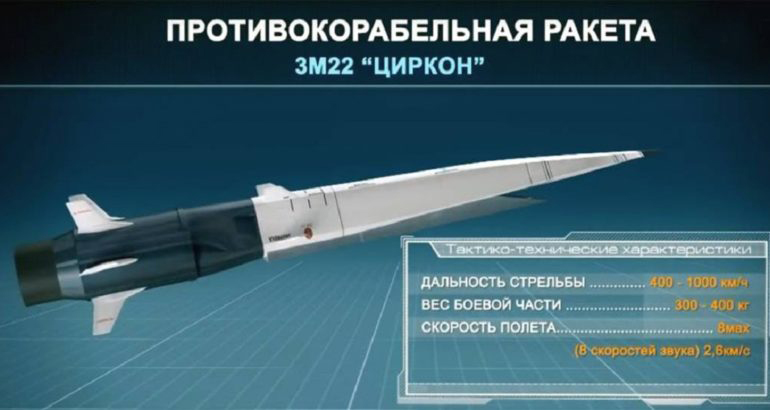 Artist impression of 3M22 Tsirkon / Zircon hypersonic missile. (Via Naval News)
Artist impression of 3M22 Tsirkon / Zircon hypersonic missile. (Via Naval News)
In the recent development, Russia carried out a successful launch test for its first hypersonic cruise missile named Tsirkon (Zircon). Tsirkon is the latest generation Russia’s of hypersonic cruise missile technology. It has the capability to fly at a low altitude with the help of a scramjet-powered maneuvering system that provides it with exceptional stealth ability and Mach 7 speed capability. The cruise missile can be launched from Ships, Submarine, Aircraft, and Land-Based Mobile Launching Systems.
United States
The United States has pursued the development of hypersonic weapons since the early 2000s. Recently, development efforts have been focused on hypersonic glide vehicles and hypersonic cruise missiles with short and intermediate range. The United States defense budget has at least 3% of its share dedicated to the research and development of hypersonic weapons, according to statistics. The Pentagon’s 2022 budget request for hypersonic research was $3.8 billion.
As per the information released by the Congressional Research Service, the United States currently has at least seven different hypersonic weapons development projects spread across Air Force, Army, Navy, and Defense Advanced Research Projects Agency (DARPA). The U.S. advances in the development of hypersonic weapons are directly motivated by its rivals China and Russia, who are currently leading in the field. The U.S. has dedicated most of its funds to the development of Hypersonic Glide Vehicles and Hypersonic Cruise Missiles.
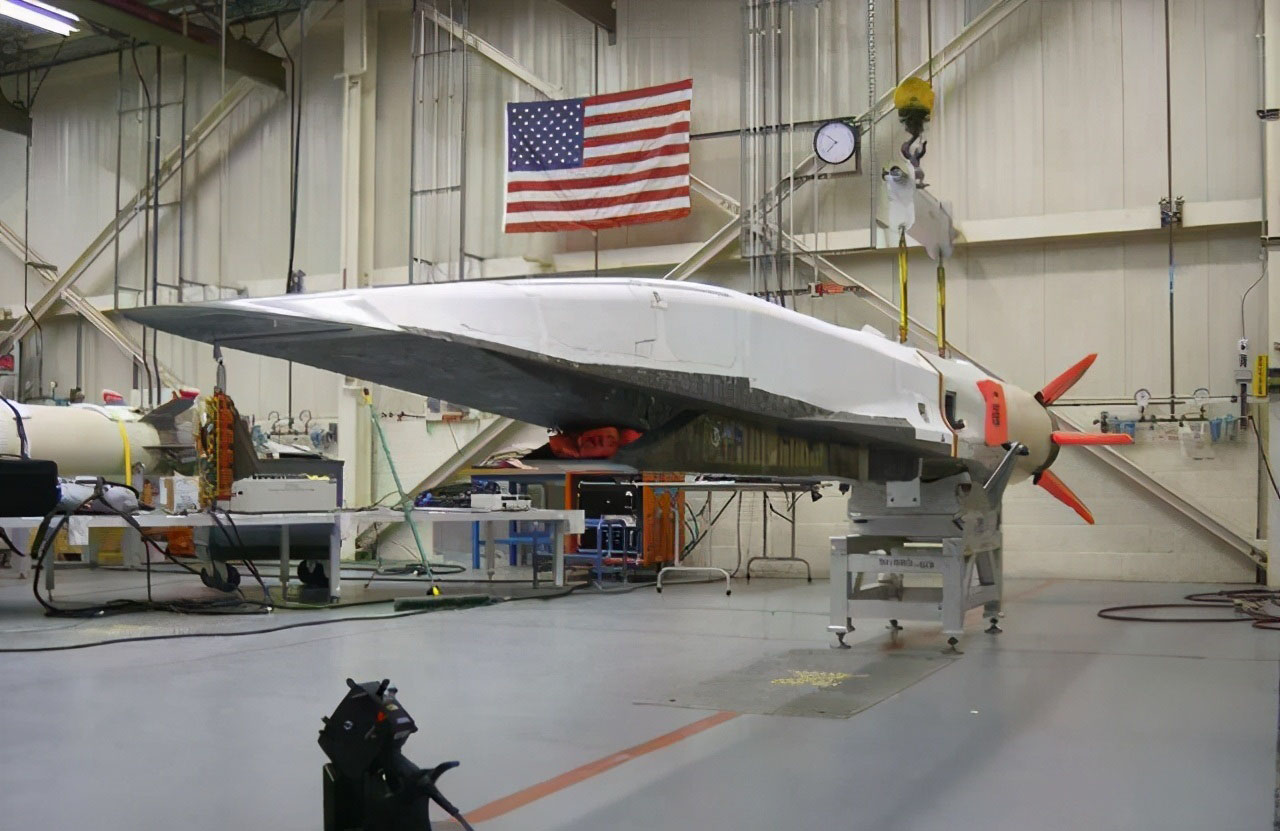 The X-51A WaverRder made its first hypersonic flight May 26, 2010 off the southern California Coast. (Image Credit: U.S. Air Force)
The X-51A WaverRder made its first hypersonic flight May 26, 2010 off the southern California Coast. (Image Credit: U.S. Air Force)
At present, three of the seven aforementioned hypersonic weapons research and development projects are being headed by DARPA, two programs are being pursued by the U.S. Air Force while U.S. Army and U.S. Navy are running one development program each.
Following is the list of all seven programs.
- Conventional Prompt Strike (CPS) by U.S. Navy
- Long-Range Hypersonic Weapon (LRHW) by U.S. Army
- AGM-183 Air-Launched Rapid Response Weapon (ARRW) by U.S. Air Force
- Hypersonic Attack Cruise Missile (HACM) by U.S. Air Force
- Tactical Boost Glide (TBG) by DARPA
- Operational Fires (OpFires) by DARPA
- Hypersonic Air-breathing Weapon Concept (HAWC) by DARPA
The U.S. hypersonic weapons development program is aimed towards developing non-nuclear hypersonic weapons hence it is mainly focused on improving the accuracy of hitting the targets rather than relying on the warhead capabilities to provide results. In March 2020, the U.S. Navy has carried out its first successful test of the hypersonic missile at Kauai, Hawaii Naval Facility.
The Principal Director for Hypersonics in the Office of the Director of Defense Research and Engineering at the Department of Defense, Michael E. White noted that the March 2020 test of the hypersonic glide body successfully demonstrated a “capability to perform intermediate-range hypersonic boost, glide and strike”. The same year in August, the U.S. Navy conducted a second-stage solid rocket motor test for a hypersonic weapon in Promontory, Utah.
On October 20, 2021, the U.S. Navy’s Conventional Prompt Strike (CPS) and U.S. Army's Long Range Hypersonic Weapon (LRHW) hypersonic missiles test was carried out at NASA’s testing facility in Wallops, Virginia.
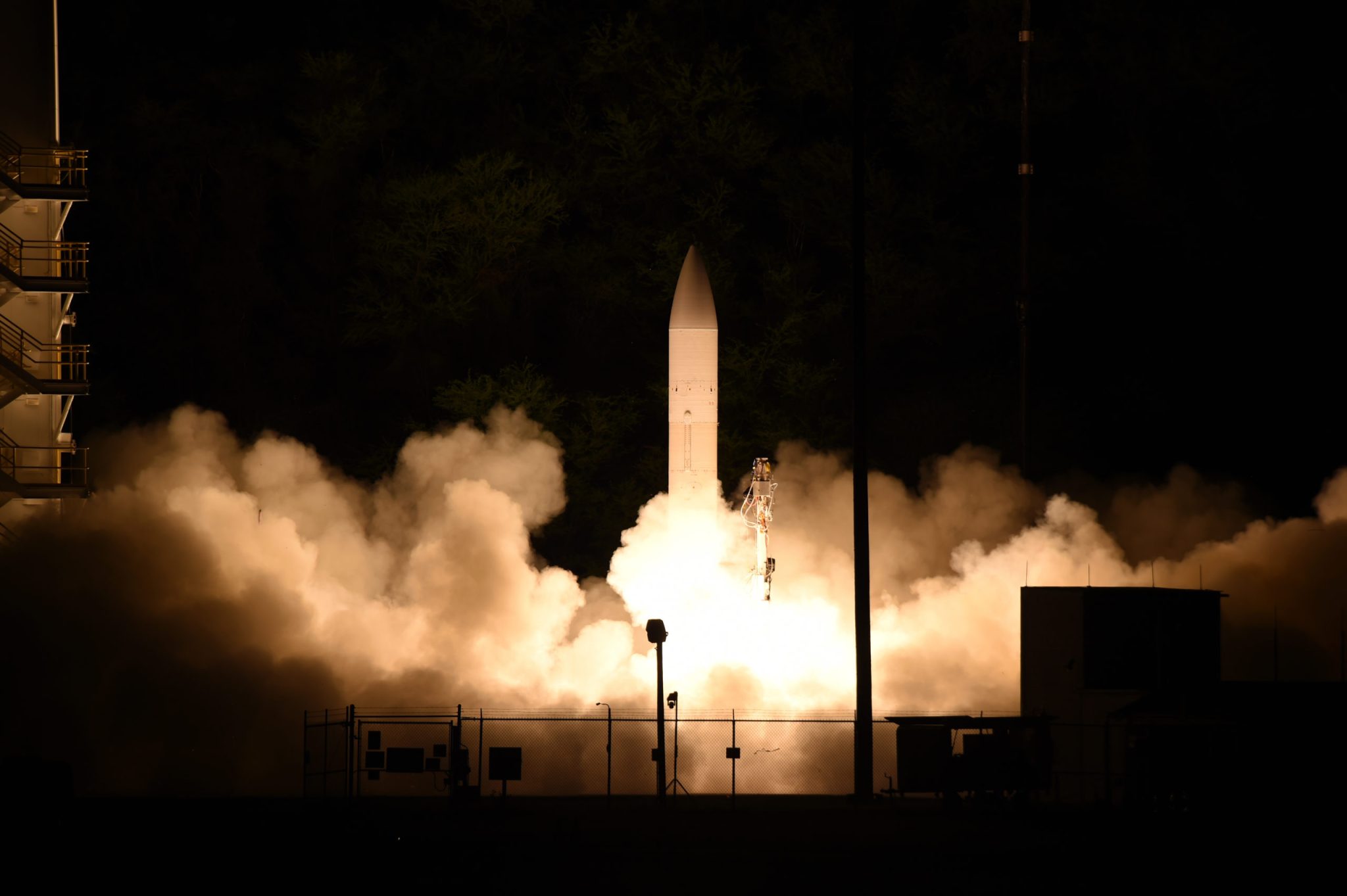 The U.S. Navy and U.S. Army jointly executed the launch of the C-HGB hypersonic glide body from Pacific Missile Range Facility Hawaii on March 19, 2020. (Image Credit: U.S. Navy)
The U.S. Navy and U.S. Army jointly executed the launch of the C-HGB hypersonic glide body from Pacific Missile Range Facility Hawaii on March 19, 2020. (Image Credit: U.S. Navy)
According to U.S. Department of Defense estimates, the U.S. Air Force expects to field an air-launched version of hypersonic missile in 2022, while the U.S. Army would have an operational ground-launched LRHW by the end of 2023. The Navy hopes to field its ship-launched hypersonic weapons in 2023 and a submarine-launched missile in 2024.
United Kingdom
British Defense Ministry is also stepping up its project for hypersonic and directed-energy weapons development. In 2016 UK and France initiated joint research for the development of hypersonic weapons under FC/ASW Program to upgrade the currently used Harpoon missiles with CVS401 Perseus, which is five meters long stealth hypersonic cruise missile with 800kg mass and 200kg payload capacity with a range of up to 300km. The missile was designed with multi-platform launching systems compatibility. However, following the events of Brexit as well as France’s response to the AUKUS, the deal seems to have a dark future. This did not stop the UK from carrying out its own research and development for hypersonic weapons.
In 2019, the UK Ministry of Defense has landed a $12 million dollar contract with British company Rolls-Royce for the development of high-Mach propulsion engines for aircraft and missiles. The Rolls-Royce has been in the process of developing an EJ-200 gas turbine engine that is capable of reaching Mach 5 speeds. The class of engine is already in use by the British military to power UK’s Typhoon fighter jets. The recent project is aimed towards embedding the same technology into hypersonic weapons.
Britain’s Chief of Air Staff Capability Air Vice Marshal Simon Rochelle said in 2019 that “the British, along with others, were looking at how to rapidly introduce such weapons into the RAF’s [UK’s Royal Air Force] inventory.”
UK’s Reaction Engines is working on the Synergetic Air-Breathing Rocket Engine (SABRE) project for hypersonic flight and for reusable spacecraft, which is designed to reach speeds above Mach 5. The project has already received more than £100 million ($130 million) funds and secured investments from Rolls-Royce, BAE Systems, and Boeing HorizonX.
Reaction Engines and Rolls-Royce have been working closely to explore the “potential of high-Mach systems” and opportunities in “supersonic and hypersonic aviation”, Director of Global Strategy and Business Development at Rolls-Royce Mark Thompson said in August 2020.
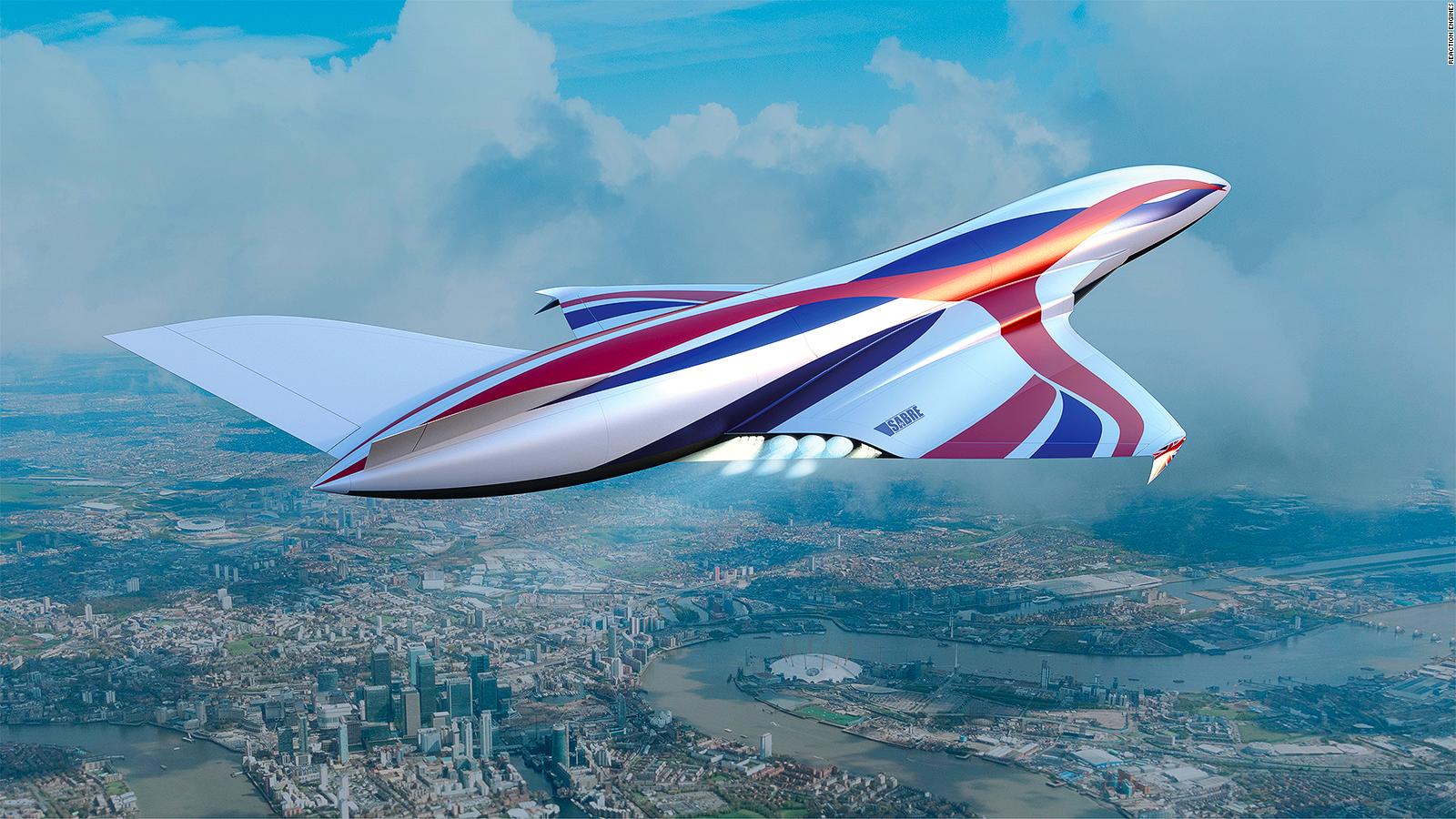 An artist rendering by Reaction Engines shows a potential application of the British company's Sabre engine on an aircraft. (Image Credit: Reaction Engines)
An artist rendering by Reaction Engines shows a potential application of the British company's Sabre engine on an aircraft. (Image Credit: Reaction Engines)
The head of UK Space Agency Graham Turnock said at the UK Space Conference 2019 that the work on SABRE engine technology is “already very advanced” and it could reach operational service in 2030s.
The United Kingdom is also active on the front of acquiring directed-energy weapons. The UK’s Ministry of Defense has awarded three contracts to deploy directed energy weapons, including two high-power lasers and one radio-frequency system with the British Army and the Royal Navy. The $72.5 million worth, four-year contracts will be completed by consortia led by global defense giants Thales and Raytheon. It is expected that British Army would be able to commission its first directed energy defense system by the year 2023.
France
France has accelerated its efforts to join the race of hypersonic weapons development, and is currently working on several indigenous and collaborative projects.
In July 2021, France announced that the French Aerospace Lab ‘Onera’ and European missile builders ‘MDBA’ are aiming to conduct prototype tests for France’s indigenously produced hypersonic cruise missile. France will conduct the first flight test of its full-scale prototype at the U.S. Air Force testing facility. According to the French research agency official, “test flight of a four-meter-long missile” will be conducted in collaboration with the U.S. Air Force and NASA.
The small-scale model of a Lea experimental cruise missile was displayed for the first time at the Aero Club de France, French aerospace association. The Lea Project’s missile would be powered with hydrogen-methane fuel to achieve speeds up to Mach 8. After a successful experiment, it is expected that a similar propulsion system can be used in the French nuclear air-launched cruise missile Air-Sol Moyenne Portée (ASMP) to bring it up to the hypersonic capabilities.
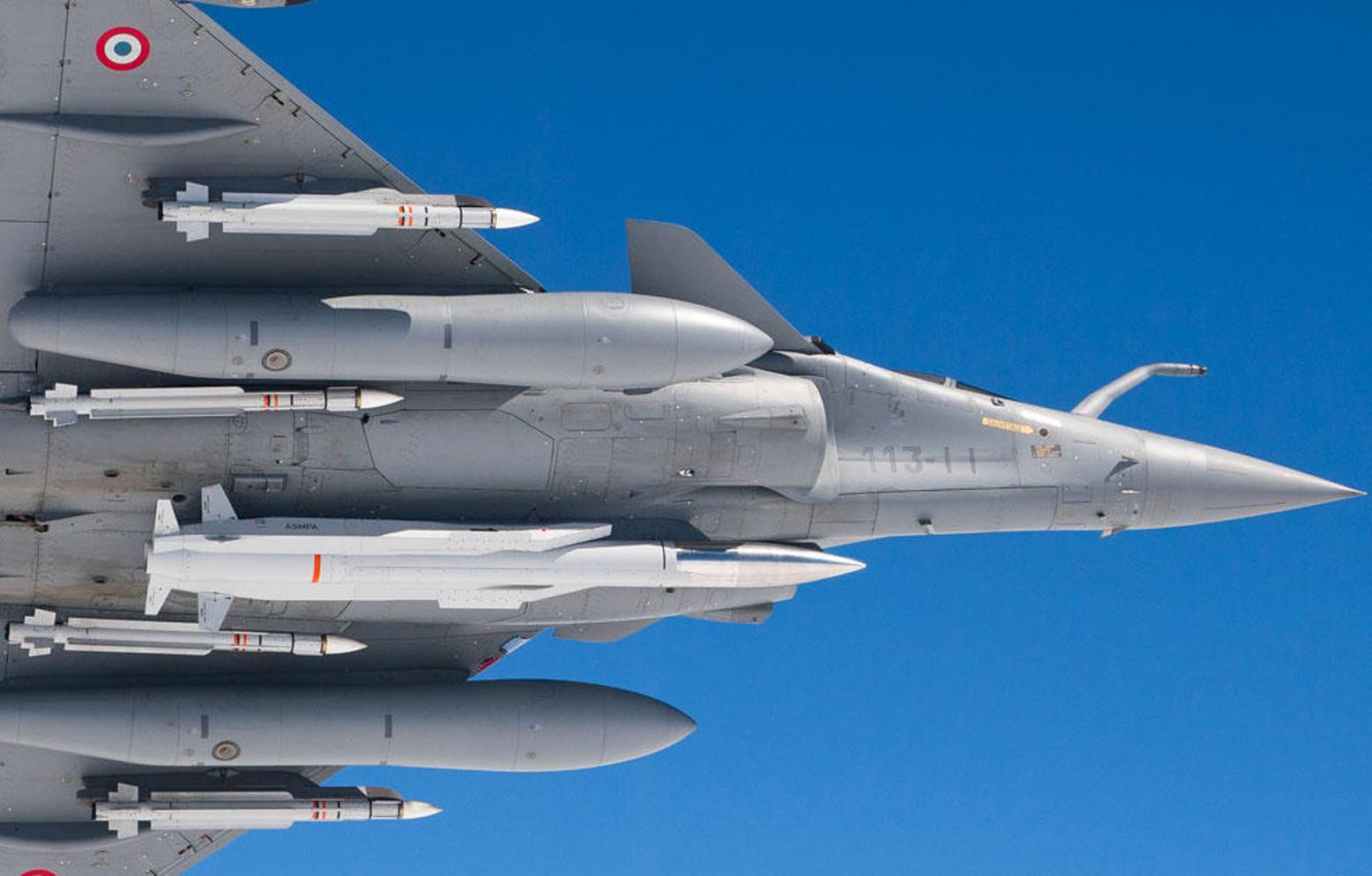 French Rafale 4th generation fighter jet with Air-Sol Moyenne Portée-Amélioré.
French Rafale 4th generation fighter jet with Air-Sol Moyenne Portée-Amélioré.
French Navy is also planning to conduct the final test for the military-grade HELMA-P (High Energy Multiple Applications – Power) system. HELMA-P system was designed through a joint effort by CILAS Ariane Group, between 2017 and 2019. The system consists of a 2-axis turret with a set of optical sensors and a laser weapon which generates the power of 2 Kilowatts. The turret is operated by a single operator through a man-machine interface. It has the capability to reach targets up to 1km away, which is 3 to 4 times greater compared to anti-drone technologies.
The first test of HELMA-P laser effector was conducted in mid-October 2020 and successfully destroyed a flying drone by a laser. The French military hopes to make the experimental system fully operational by 2024.
Japan
Japan has been working on two indigenous hypersonic weapons development projects since the early 2010s, Hypersonic Cruise Missile (HCM) and Hypervelocity Gliding Projectile (HVGP). HCM will be powered by scramjet engines like a conventional cruise missile. It can operate at a much higher speed while being capable of traveling at long ranges. HVGP will feature a solid-fuel rocket engine that will boost its warhead payload to a high altitude before separation, where it will then glide to its target using its altitude to maintain high velocity until impact.
The Japanese government has been working on research and development of hypersonic technology under the Acquisition, Technology and Logistics Agency (ATLA) program, with the allocation of $2 billion in its latest defense budget. ALTA has contracted Mitsubishi Heavy Industries to collaborate on research in both the HCM and HVGP. HVGP is expected to enter service around 2026.
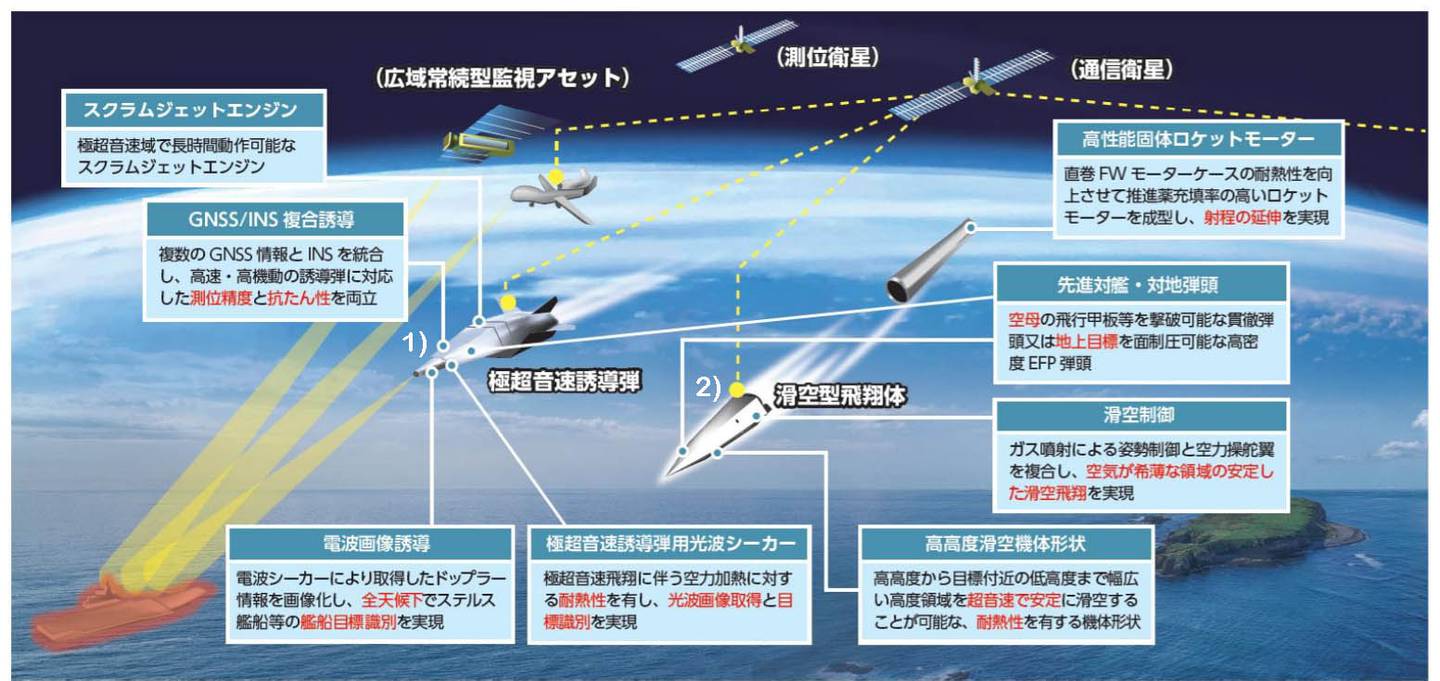 Japanese-language graphic showing two planned hypersonic weapons: (1) the hypersonic cruise missile and (2) the hypervelocity gliding projectile. (Image Credit: Japan's Acquisition, Technology and Logistics Agency)
Japanese-language graphic showing two planned hypersonic weapons: (1) the hypersonic cruise missile and (2) the hypervelocity gliding projectile. (Image Credit: Japan's Acquisition, Technology and Logistics Agency)
ATLA’s research on the HCM is planned to continue until 2025, although at this time it is not guaranteed when it will be developed into an operational system. Japan continues to limit its defense capability from conducting offensive operations. Japan proclaims that the development of its hypersonic weapons and technology is only aimed towards defending its remote islands in the Indo-Pacific region, referring to Senkaku Islands in the East China Sea, which is currently administered by Japan but claimed by China.
Korean Peninsula
The divided countries in Korean Peninsula are also in a race to develop their own hypersonic weapons. South Korea is pushing forward with its plans to develop hypersonic missiles technology with the help of its long-term ally United States. South Korea seeks a viable missile strike capability in response to North Korea’s extensively increasing ballistic missile arsenal. North Korea’s ballistic missile arsenal remains that one domain in which the isolated nation surpasses its southern neighbor.
In August 2020, South Korean Defense Minister Jeong Kyeong-doo said the country would accelerate the development of long-range hypersonic missiles, as well as produce more non-nuclear warheads while being committed to the determination of denuclearization of the Korean Peninsula. South Korea has already developed short-range ballistic missiles to hold North Korean targets, including its mobile ballistic missiles, during an increasing risk of violent conflict.
For its part, nuclear-armed North Korea has claimed to be developing such weapons of its own. The South Korean government made announcements during the 8th Congress of the Workers’ Party of Korea in January, with reports suggesting the North has created a new research center dedicated to hypersonic missiles technology under its Academy of National Defense Science.
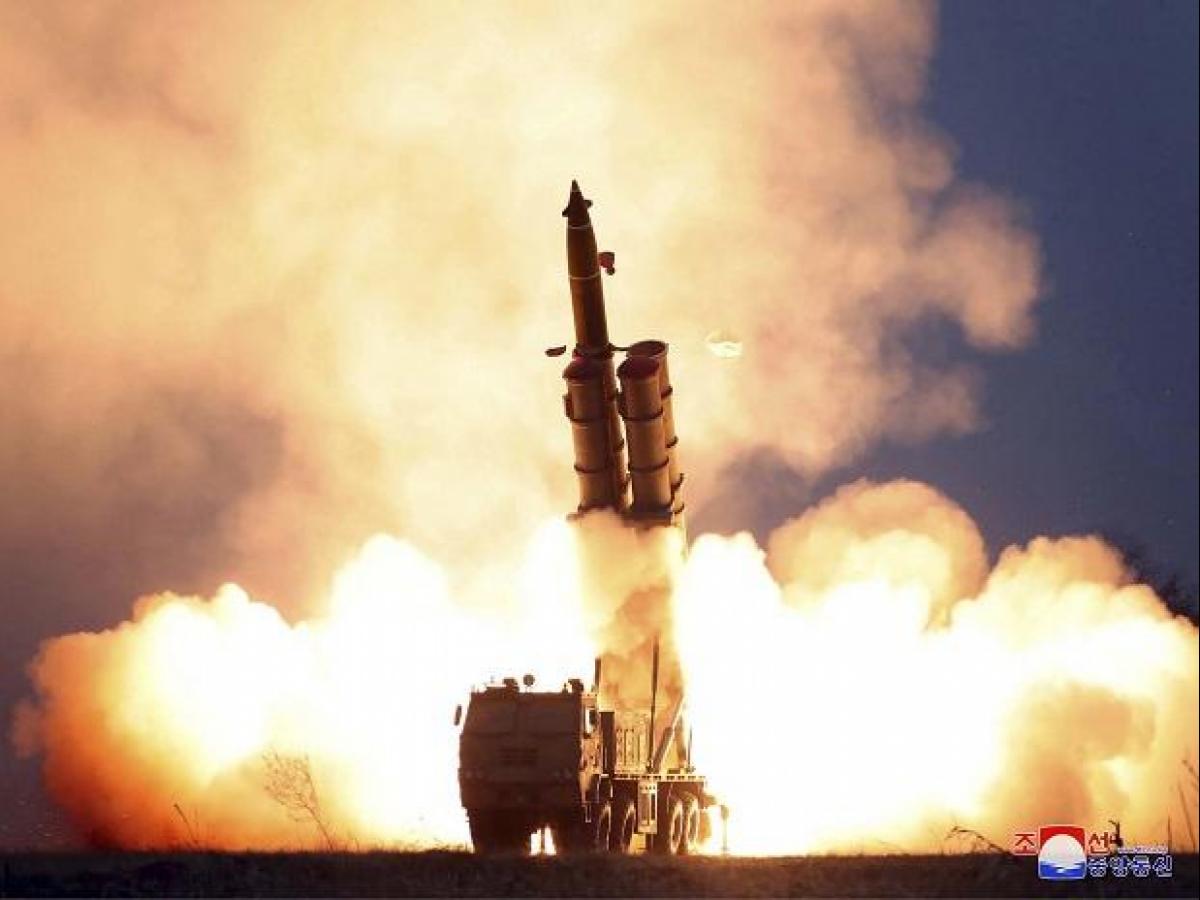 A projectile is fired during North Korea's missile tests in this undated picture released by North Korea's Central News Agency (KCNA) on 28 November 2019. (Image Credit: KCNA via Reuters)
A projectile is fired during North Korea's missile tests in this undated picture released by North Korea's Central News Agency (KCNA) on 28 November 2019. (Image Credit: KCNA via Reuters)
Although there is little verifiable information available about the development of hypersonic weapons by both countries, North Korea conducted its Hwasong-8 missile topped with a hypersonic gliding vehicle warhead on September 28, 2021. With the successful test of its first hypersonic missile with nuclear capabilities, North Korea joins the hypersonic weapons race headed by major military powers.
India
In 2018, Indian Ministry of Defense released its “Technology Perspective and Capability Roadmap” which reviewed more than 200 new prospective products that were to be added to the Indian arsenal. Among the list were the projects focusing on Tactical High Energy Laser Systems. This project falls under the category of directed-energy weapons.
Directed-energy weapons technology is mostly used for defensive purposes rather than offenses in modern warfare. India’s Defense Research and Development Organization (DRDO) has devised a budget of $100 million towards directed energy weapons projects to focus on indigenously producing drone jamming technology through electromagnetic disruption.
The first of such classified weapons has been given the name of DURGA II (Directionally Unrestricted Ray-Gun Array). India’s DURGA II project is heavily inspired by the U.S.’s Ultra-Short Pulse Laser (USPL), which is said to be the most powerful laser in existence right now. According to the DRDO scientists, DURGA II can be integrated into sea, land, and airborne launch systems and holds the capability to detect and destroy drones as well as cruise missiles in the proximity of 250m, however, there has not been any substantial successful test results so far.
In October 2020, India’s DRDO test-fired an advanced version of “Shaurya”, a canister launched hypersonic surface-to-surface tactical missile. According to sources, the missile has a range of 700 to 1,900 km, and can carry both conventional and nuclear warhead. However, the missile can only reach hypersonic speed during the last phase of moving close to its target.
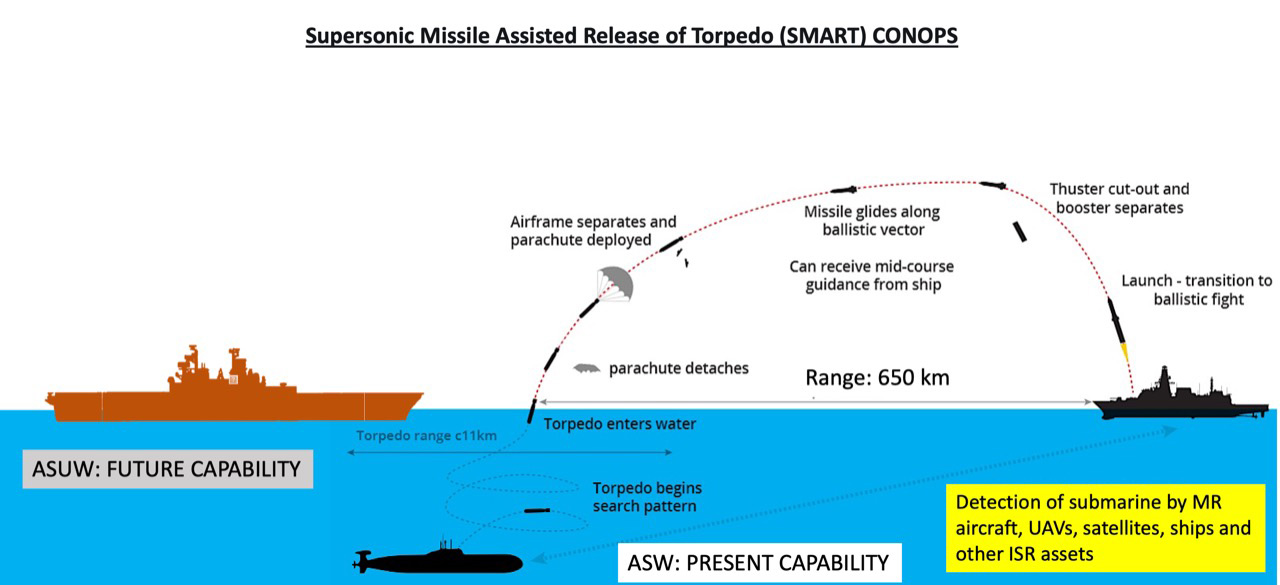 India's SMART system (Image Credit: Sameer Joshi/ThePrint)
India's SMART system (Image Credit: Sameer Joshi/ThePrint)
Indian Defense Ministry and DRDO have also been active on the front of developing hypersonic missile systems and made significant progress by carrying out tests for its Supersonic Missile Assisted Release of Torpedo (SMART) on October 4, 2021. The SMART system is a combination of a solid fuel propelled rocket embedded with a lightweight torpedo that ranges up to 650 kilometers.
The SMART missiles cover most of its pathway being airborne and as it gets closer to a predefined target it prepares a lightweight anti-submarine torpedo to destroy the target. The torpedo launched by the SMART missile system acts the same as a regular Light Weight Torpedo (LWT) to find its target underwater.
Turkey
In recent years, Turkey is prioritizing directed-energy weapon and indigenous hypersonic programs to modernize its defense capabilities. Turkish key military industries have also accelerated their DEW and hypersonic development projects.
In 2013, the Turkish government announced that it plans to develop a precision laser close-in weapon system initially to be installed on the next-generation frigates, TF-2000. The government tasked Scientific and Technological Research Council (TUBITAK) and Security Technologies Research and Support Group (SAVTAG) with the program.
In 2015, Turkish defense engineers successfully tested the first prototype of the High Power Laser Weapons System. Turkey aims to develop and manufacture an indigenous high-power laser weapon system that will detect, track and neutralize all land, sea, and aerial targets.
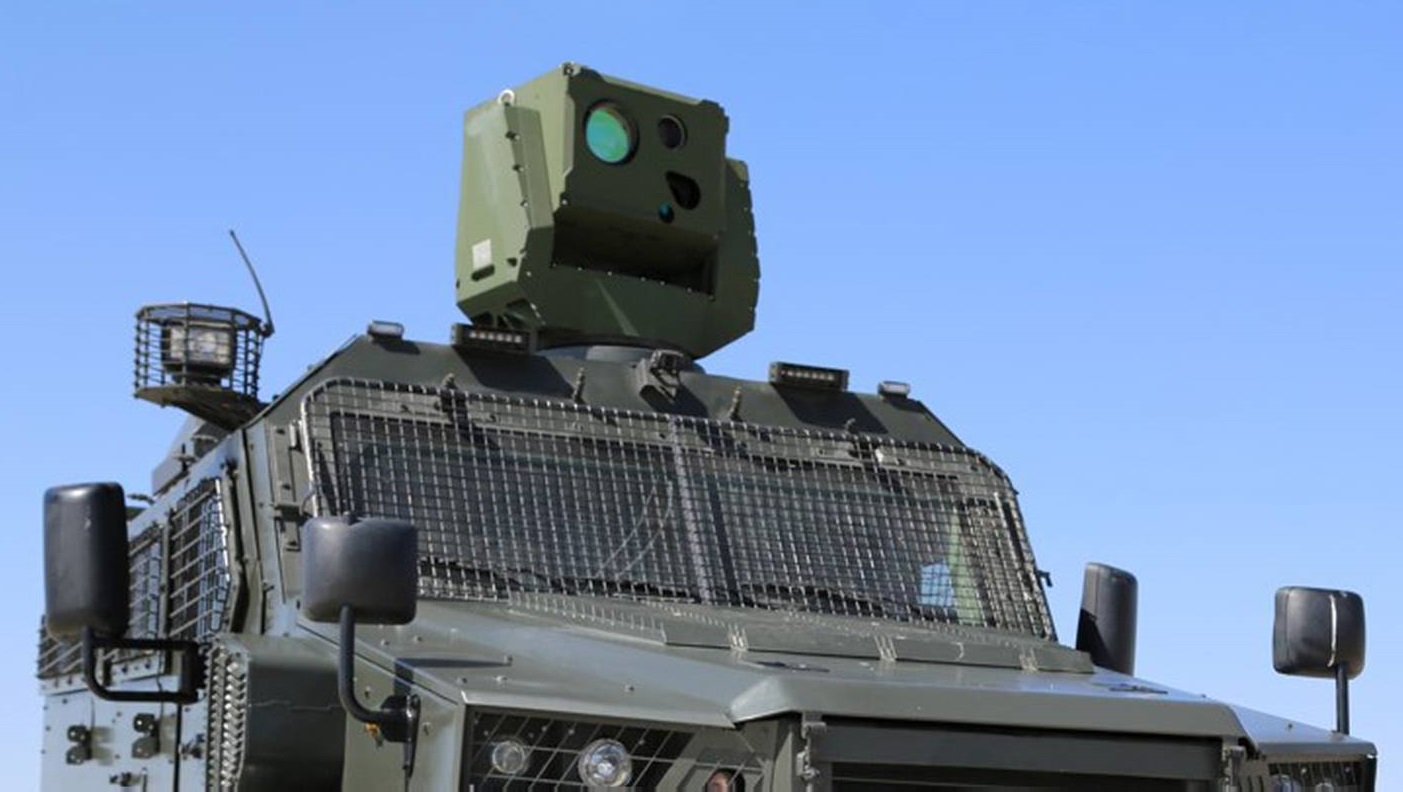 Turkish Laser Defense System, developed by Aselsan, is mounted on a military vehicle. (Image Credit: Aselsan)
Turkish Laser Defense System, developed by Aselsan, is mounted on a military vehicle. (Image Credit: Aselsan)
Apart from the development of directed energy weapons, Turkey is also conducting extensive and frequent research on developing its indigenously produced hypersonic weapons.
In January 2021, TUBITAK unveiled its SAPAN project, first electromagnetic weapon that can fire gunpowder-free bullets using electromagnetic energy. TUBITAK SAGE’s Manager Gurcan Okumus told TRT World in an interview that SPAN project was successfully launched and “with the electromagnetic launch systems, ammunition can be directed to the target at hypersonic speeds”. According to TUBITAK’s manager, the bullets can reach the target 8 to 10 times faster than the speed of sound. SAPAN is one of the main programs for research and development of hypersonic weapons technology, however, it requires some modifications before it reaches Turkish armed forces’ inventory.
TUBITAK is also working on precision-guided smart missiles, Ramjet Supersonic missiles, and next-generation, high precision stand-off missile (SOM) cruise missile projects for Turkish armed forces.
Pakistan
China and Turkey’s close ally, Pakistan is also one of the front-runners in directed-energy weapons development and acquisition. Pakistan Navy has been on the course of equipping its warships with the latest hypersonic missile technology. In the hypersonic domain, Pakistan’s ship-based, long-range, anti-ship and land-attack P282 ballistic missile is under development at the newly established Naval Research and Development Institute which is also responsible for developing Pakistan’s laser-based directed-energy weapons. However, the progress on these programs and the current status has not been proclaimed by either the Ministry of Defense Production or the Pakistan Navy.
Pakistan has ordered Type 054A/P frigates, similar to those in China, and Milgem corvettes, similar to Turkey’s Ada class. Pakistan is also working on designing the Jinnah-class frigate possibly similar to Turkey’s Istanbul class. The acquisition of these ships and frigates indicates that Pakistan firmly plans to acquire hypersonic weapons technology as well as directed-energy weapons that are compatible with these frigates and warships.
 Naval ships from Pakistan, Turkey and China take part in the multinational naval exercises 'AMAN-19' in the Arabian Sea near Pakistan's port city of Karachi. (Image Credit: AFP)
Naval ships from Pakistan, Turkey and China take part in the multinational naval exercises 'AMAN-19' in the Arabian Sea near Pakistan's port city of Karachi. (Image Credit: AFP)
The installation of the Roketsan-made Alka laser weapon on Turkish warships indicates that Pakistan plans to acquire a similar setup. Roketsan laser set on Turkish Alka can be fitted to warships to destroy or disable drones and similar targets. The company says the system can destroy a target with a laser at 500 meters, and destroy a target at 1,000 meters with its electromagnetic weapon.
Apart from these speculations Pakistan’s planned Sea Sultan long-range patrol aircraft as well as its access to China’s BeiDou satellite navigation network will likely be critical to its hypersonic quest. Given Pakistan’s growing asymmetry in the arsenal compared to India, hypersonic weapons become essential for Islamabad to balance an increasingly complex offense-defense imbalance in the Indian Ocean region.

Download PDF Version 
ALSO READ:
Regions
Issues



















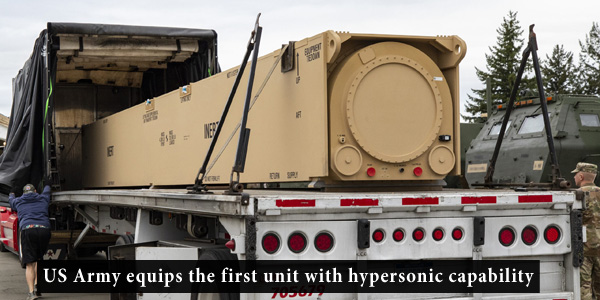

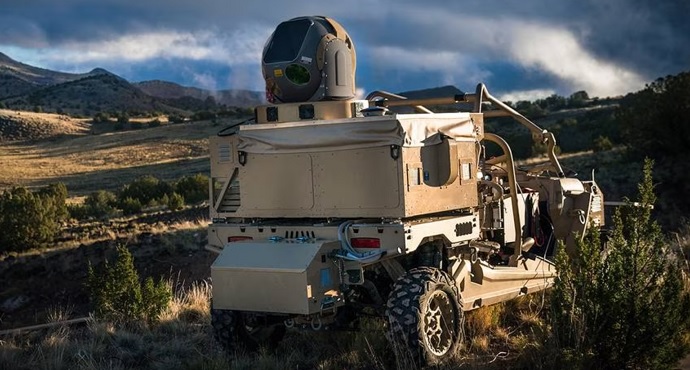
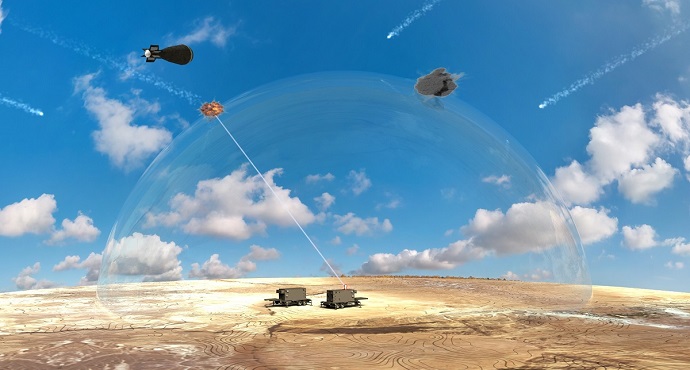
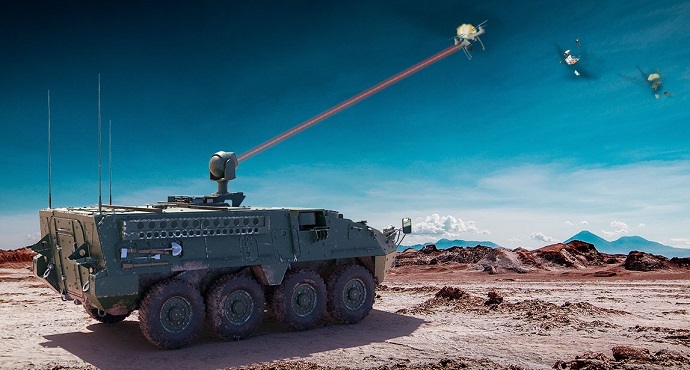
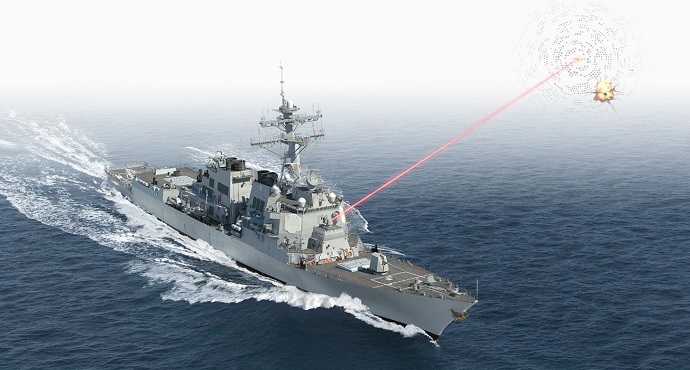
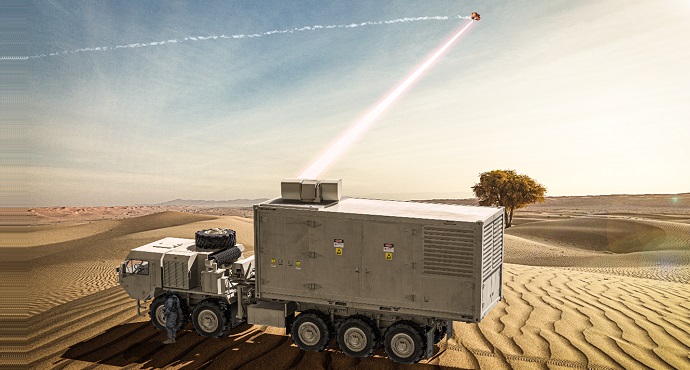
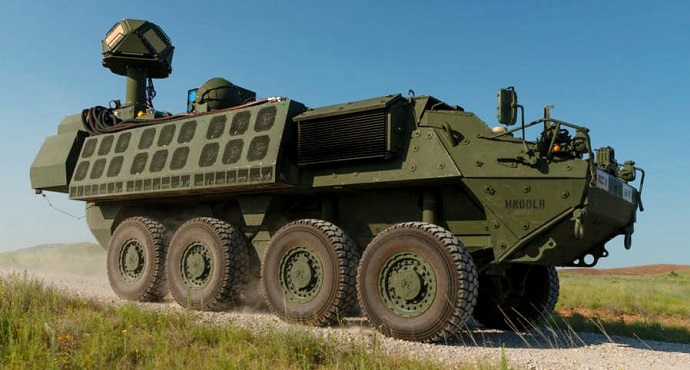
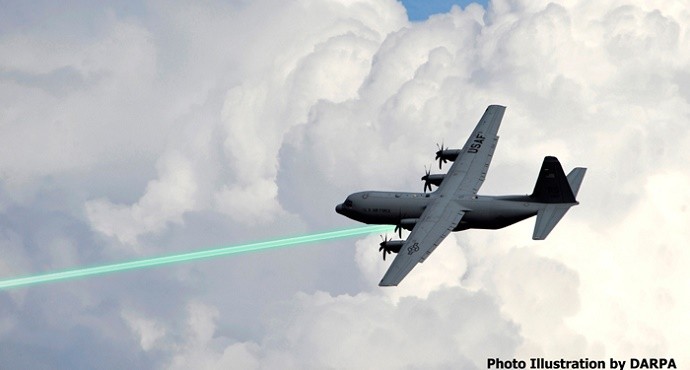

 IRIA Defense Review
IRIA Defense Review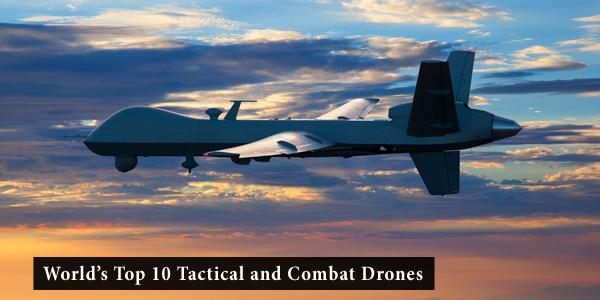 Top 10 Tactical and Combat Drones
Top 10 Tactical and Combat Drones







